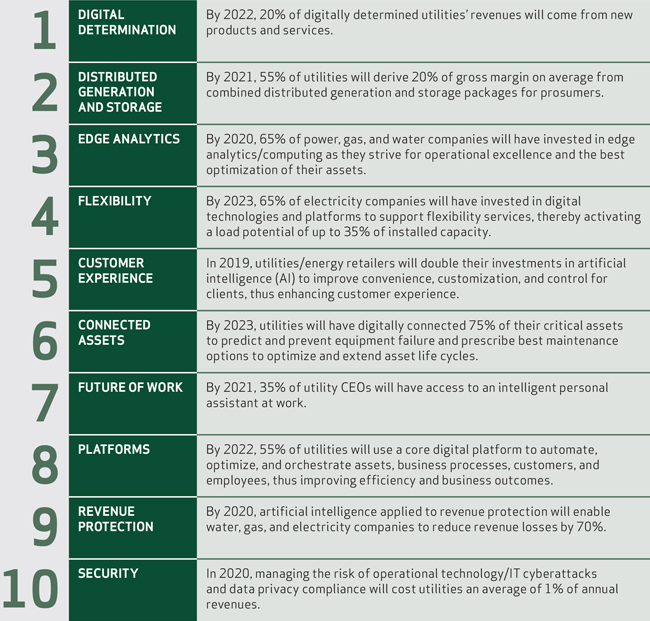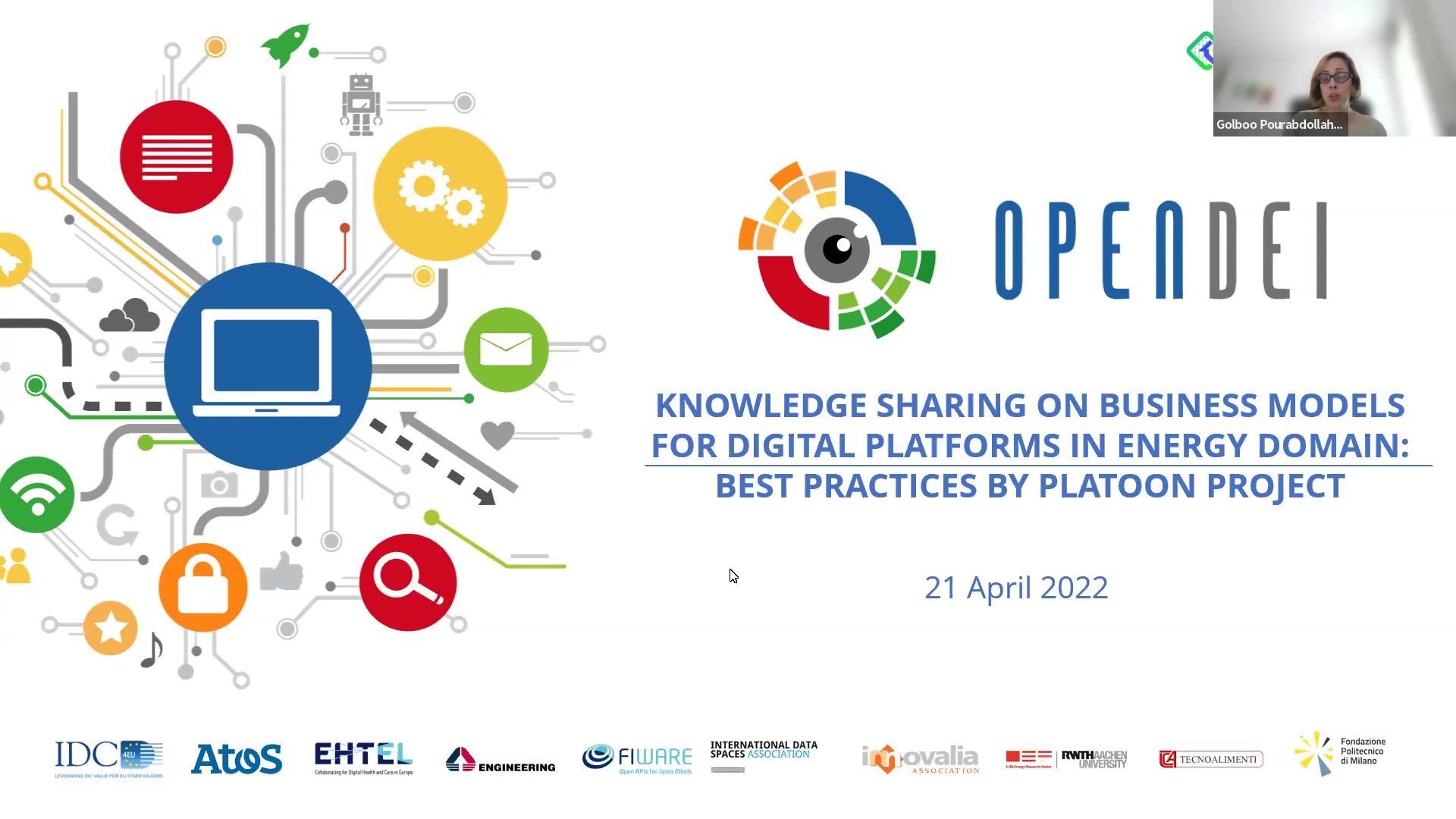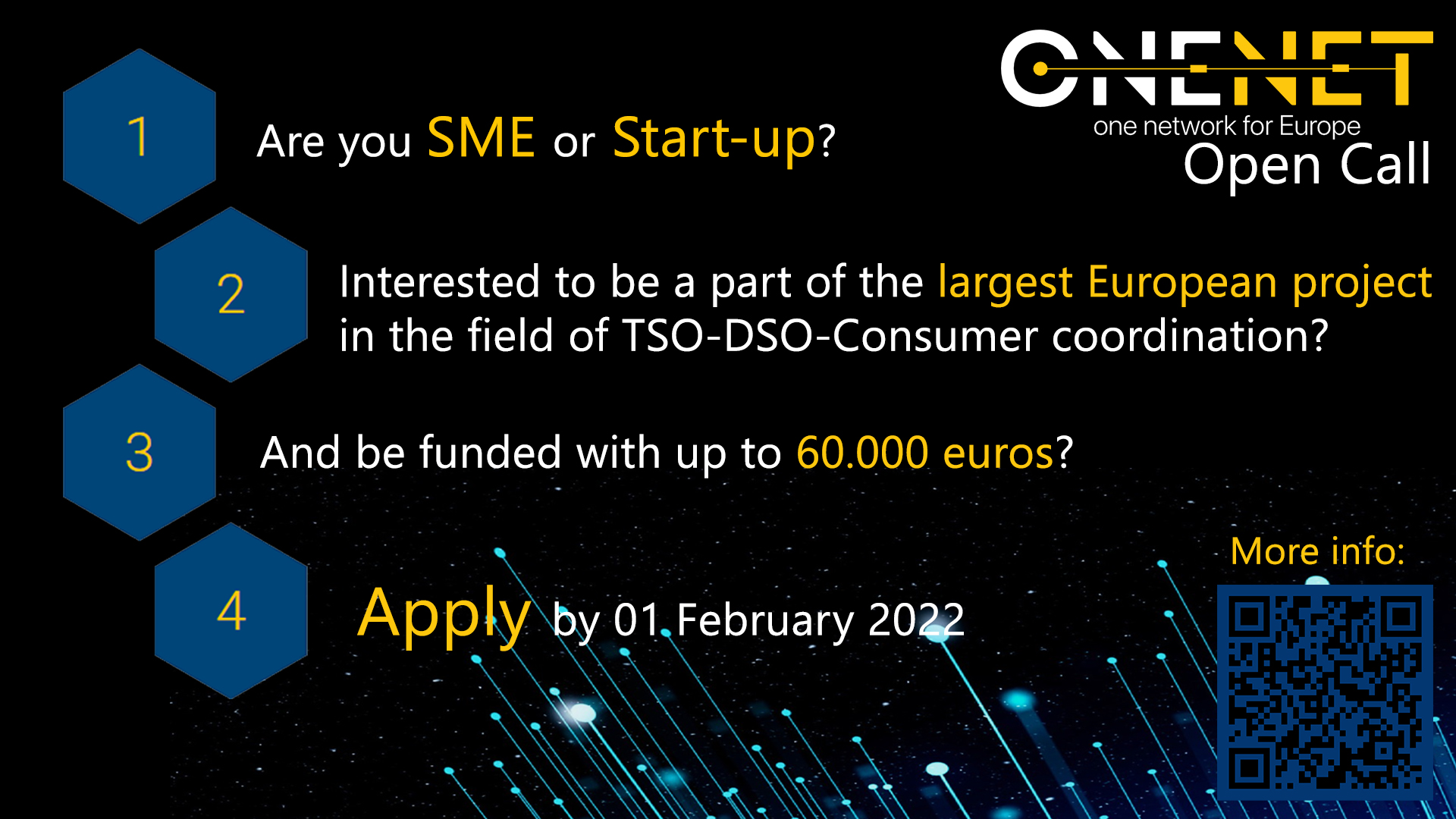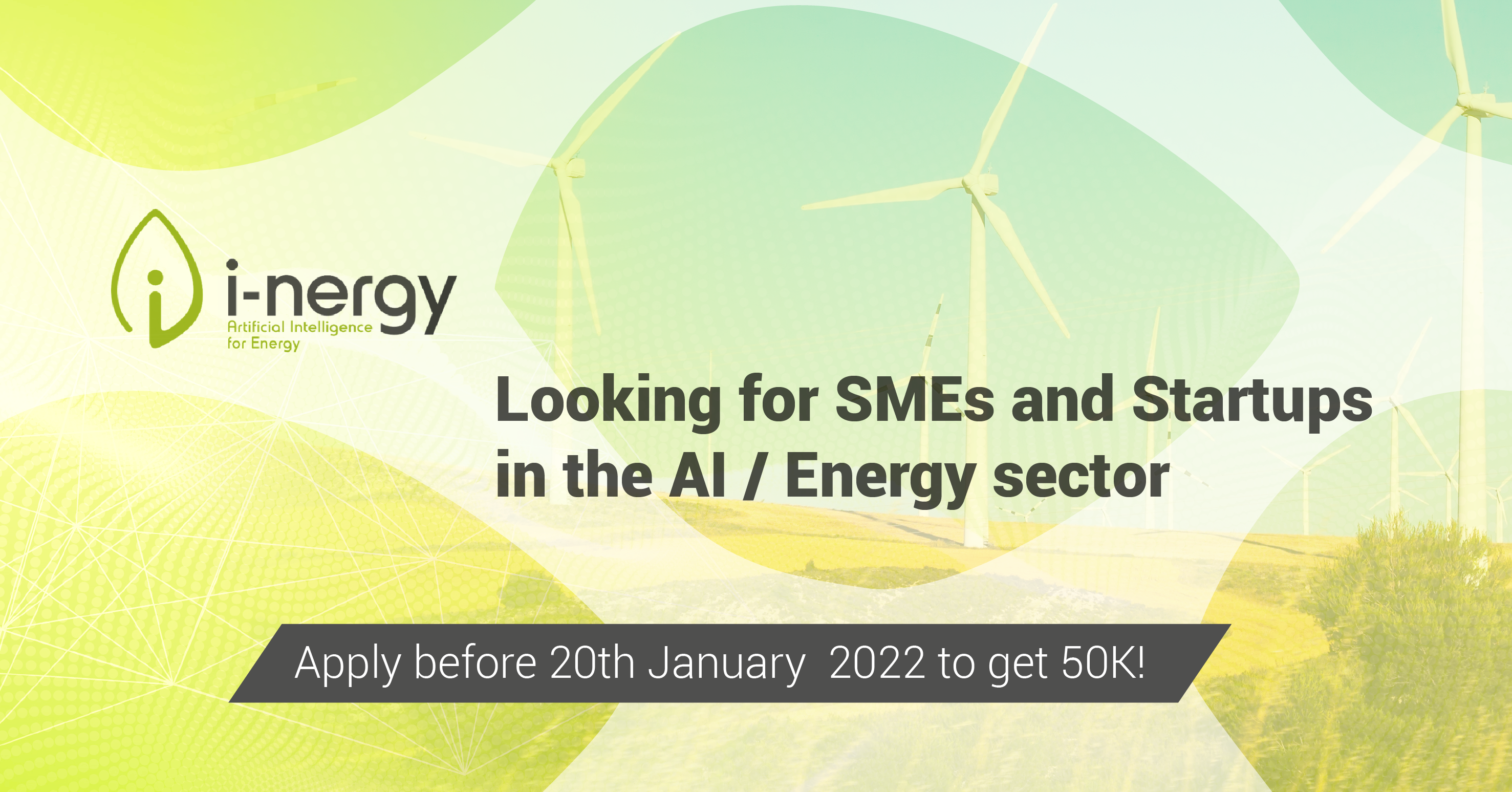Author: Roberta Bigliani, Associate Vice President IDC Energy Insights
Utilities across the world are radically transforming their businesses. This is happening despite different regulatory regimes and across the diverse electricity, gas, water and waste businesses. For instance, technology is changing how energy is produced, transported, consumed and conserved. Technology is key to reduce waste of water. On the other side, customers are not just raising experience expectations — they are becoming prosumers with an active role in energy markets. New business models are emerging, thus requiring utilities to go beyond the traditional commodity business. Offering combining distributed generation and energy storage at home is just one among the several examples of how utilities are changing the way to accomplish their mission. Digital disruptors are circumventing industry entry barriers, and utilities are being reborn in 3D: decentralized, divergent and digital.
Digital is a Key Constituent of the Utility Renaissance
IDC classifies organizations in two macro categories — digitally distraught and digitally determined — 41 percent of utilities now belongs to the latter. Digitally distraught utilities are either running digital as an impromptu effort, running multiple digital strategies initiated by the line of business, or operating with a short-term perspective. It’s no surprise that these organizations are distraught. It is difficult to accomplish a major transformation when efforts are not well orchestrated. On the other hand, a digitally determined utility has digital embedded in its enterprise strategy. It does not have a separate digital strategy since digital is the strategy.
IDC Energy Insights predicts that “by 2022, percent of digitally determined utilities’ revenues will come from new products and services. “Digitally determined utilities will be best positioned to evolve their businesses, adding new business models and revenue streams, as well as carving efficiencies out of their core operations, with data as the pillar of innovation. With the traditional commodity business becoming progressively unsustainable, utilities need to redefine their strategy to be “relevant.”
Resilience at the Top
According to IDC Energy Insights “by 2023, 65 percent of electricity companies will have invested in digital technologies and platforms to support flexibility services, thereby activating a load potential of up to 35 percent of installed capacity.”
The energy transition is not only changing how we generate and use electricity but crucially, also boosting our ability to conserve it, changing the way we operate networks and balance systems. Non-dispatchable renewables (wind and solar) already represent a quarter of power generation capacity in Europe and more than 15 percent in China. By 2030, IDC Energy Insights expects them to generate 20 percent or more of all electricity in Europe, China, India and parts of the U.S., soaring to almost 30 percent in Australia and 40 percent on the U.S. West Coast. While they have only played a minor role to date, “negawatts” and storage and are becoming important elements of renewable systems. Two decades from now — with electric cars and heat pumps adding to the mix — flexibility will be a hard currency in most of the world’s electrical systems, and it will be difficult to imagine power supply without it.
While the past decade was one of technology development, utilities have now started putting in place the building blocks of their flexibility plays, from demand-side management (DSM) and vehicle-to-grid (V2G) technology to full-fledged distributed energy resources management system (DERMS). Aggregation and virtual power plants (VPP) offer electricity companies a way to add grid services to the revenue mix, increase protection from price peaks, and offer distributed energy resource (DER) owners access to the market. System operators must oversee, use and coordinate flexibility in their grids as part of their active management responsibilities and as a tool to operate cost efficiently. VPPs, for instance, can make DER and loads more predictable and dependable for the system.
Recent field work by IDC Energy Insights confirmed that more than 80 percent of utilities have either launched or are planning to establish a flexibility services business within two years and that more than a third believe flexibility will be a critical value contributor to their retail operations by 2025.
Customer Experience Always Matters
Customer experience is a top priority for everyone, including utilities and energy retailers across the globe, independent of whether the market has been liberalized or continues to operate in a regulated regime. As more consumer purchasing power shifts into the hand of more tech-savvy generations, utilities and energy retailers are increasingly investing in technologies that can best support them to cater to these customers as well as trim spending, and artificial intelligence is one such technology.
IDC Energy Insights research revealed a strong desire for utility and energy retail customers to move from more traditional communication channels (e.g., phone calls) to modern communication channels (e.g., mobile messaging applications). However, regardless of the communication channel, there is an abundance of use cases for leveraging artificial intelligence to support the customer experience with convenience, customization and control. For instance, considering phone calls — which continue to force utilities to bear significant costs for call centers — artificial intelligence can be leveraged to listen to the content and tone of conversations to not only provide real-time support to customer service representatives, but also to gather insight into the general sentiment of customers toward the company. This enables a utility/energy retailer to preemptively carry out personalized marketing campaigns to support favorable opinions of the brand.
Considering more modern, and less expensive, communication channels such as mobile messaging applications and text messages, specialized chatbots support utilities and energy retailers to provide their clients with convenience, customization and control. It should be noted that additional IDC Energy Insights research revealed that an overwhelming majority of customer contact was driven by billing inquiries, so not a particularly complex artificial intelligence augmented messaging would be needed to meet most customer demands.
As utility and energy retailers expand into new revenue streams, such as selling or leasing photovoltaic panels or energy storage systems, or both as a package, it will be fundamental for these companies to provide customer experience comparable to those of customer-centricity leaders. Otherwise, the possibility to sell beyond a commodity will not be grasped.
For this reason, IDC Energy Insights expects that “In 2019, utilities/energy retailers will double their investments in artificial intelligence to improve convenience, customization, and control for clients, thus enhancing customer experience.”
Embracing Risk
IDC Energy Insights predicts that “In 2020, managing the risk of operational technology/IT cyberattacks and data privacy compliance will cost utilities an average of 1 percent of annual turnover.”
Utilities are faced with a double challenge — protecting customers’ personal data and securing operational technology from potential threats that could affect physical infrastructure. Since energy is considered “critical” infrastructure, its security is of special interest, not least because of external, state-sponsored cyberattacks. Consequently, the cost of addressing this challenge will continue to rise in the forthcoming years. On the privacy front, data leakage and its prevention have drawn and will continue to draw the attention of regulators worldwide, in line with the new sensibility regarding privacy. As utilities venture to the smart home domain, as well as residential energy production and storage, utilities will also have to secure and protect access to personal data. The prospect of heavy fines will force utilities to be cautious and accept high compliance costs in the short term, in exchange for lowering the probability of being held liable for inadequate security measures. Regulatory compliance, in general, has topped utility executives’ agendas for years, above that of the single IT department, and it will continue to be an area of zero risk tolerance.
Year after year, the impact of personal data breaches on customers’ trust on service providers has been more and more devastating. Utilities are no exception to that trend, though to a lesser extent thus far. As this traditionally asset-centric industry is evolving toward increased data sophistication, the risk of becoming the target of cyberattacks is also set to become higher, and the same applies to corresponding fines. Strategic foresight regarding the IT and business sides of the problem will therefore prove invaluable.
IDC Energy Insights’ Recommendations
In order for utilities to continue to be relevant, resilient and embrace risks, IDC Energy Insights recommends the following:
- Strategize your own disruption. Do not wait to be disrupted by others, and initiate your business transformation journey, embed digital in your enterprise strategy and do not separate it since digital is the strategy.
- Execution matters. Develop an agile enterprise road map that is modular (break the effort into chunks/use cases, delivering immediate business value), scalable (think through how the road map will evolve) and extendable (to accommodate changes as they unfold).
- Digital platform matters. Develop a digital platform that integrates digital innovation and the enterprise-wide systems together in a single platform. The platform enables digital products, services and experiences while modernizing and integrating the internal IT environment.
- Culture eats strategy for breakfast. Foster the development of a company culture that values innovation, proves commitment to employees’ success, leverages agile and design thinking methodologies and creates a borderless organization capable of crowdsourcing talent.
- Time for new KPIs. Size your success along the journey by integrating traditional performance indicators with a new set of KPIs measuring innovation rate, customer and employee advocacy, data valorization, business operations, work and labor supply.
IDC FutureScape: Worldwide Utilities 2019 Top 10 Predictions




